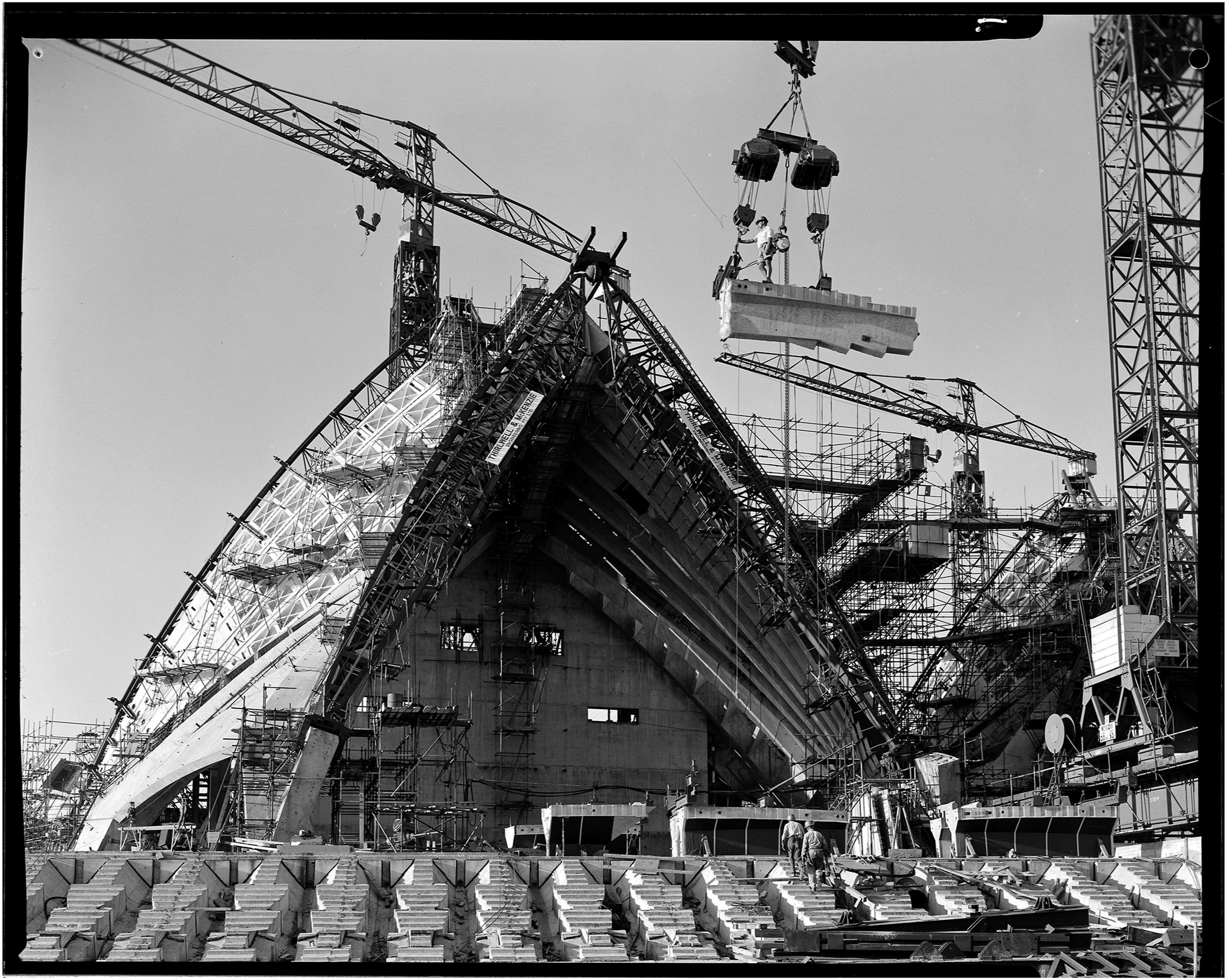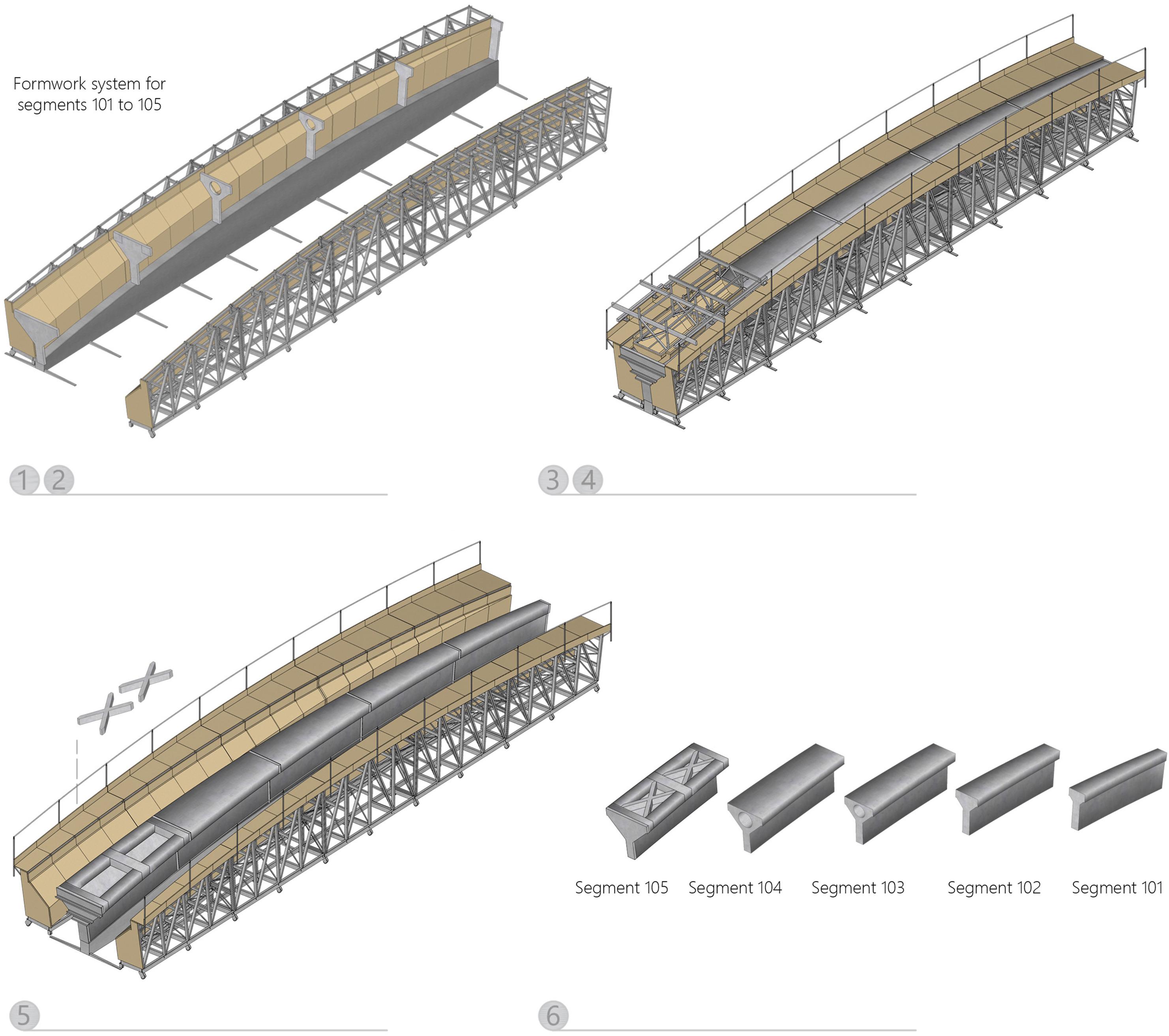
Construction's second stage of Sydney opera house (1963-1976).© David Moore photography
EPFL professor Paolo Tombesi has rewritten an important part of the history of this gem of Australian architecture. Tapping into previously unexplored archives, he found that its distinctive roof - consisting of shells in the form of boat sails - was assembled through a remarkable feat of engineering.
The Opera House is as emblematic of Sydney as the Eiffel Tower is of Paris. Masterpieces of 20th-century architecture such as these continue to captivate engineers and enthusiasts alike. The Opera House will turn 50 on 20 October 2023 and a number of commemorative events are planned, including some that will shed light on the building's tumultuous construction process, which lasted 15 years.
Our discovery is important because it lets us piece together the Opera House's history using a rigorous approach based on shop drawings that long sat forgotten in the archives.
Tombesi, a full professor at EPFL's School of Architecture, Civil and Environmental Engineering (ENAC), is an expert in large monuments and has spent over 20 years studying the Sydney Opera House. An article he published recently in Frontiers of Architectural Research discloses a little-known fact about the building's construction: the general contractor - an Australian firm called Hornibrook - played a pivotal role in manufacturing the building's shells between 1963 and 1967. Until now, Hornibrook's contribution has remained largely undocumented in the literature. "Our discovery is important because it lets us piece together the Opera House's history using a rigorous approach based on shop drawings that long sat forgotten in the archives," says Tombesi.

Radical innovation in architecture
The Opera House's original design - by Danish architect Jørn Utzon - would have been extremely difficult to build. All the key elements were hidden beneath the hallmark shells perched over the water. "Engineers had to adapt the building's content to fit its architectural concept," says Tombesi. "That was a radical approach and upended the conventional construction process. It was similar to the challenges that early builders faced when they erected gothic cathedrals." The Opera House is made up of three main structures: a foundation, the shells forming its roof and the indoor performance venues.
Tombesi combed through the approximately 20 Opera House monographs that currently exist but didn't find any shop drawings - only architectural sketches. "If you want to grasp the details of a building and how its components were put together, you've got to view those drawings," he explains. "That's the only way to really understand the whole process." Tombesi therefore teamed up with Paolo Stracchi from the University of Sydney and Luciano Cardellicchio from the University of New South Wales to hunt down the shop drawings - and found them in the National Archives of Australia. The drawings provided details about the highly complex structure of the shell arches as well as insight into what decisions were made by the builders and why, with the help of small-scale simulations.
From myth to truth
"We saw that Hornibrook was instrumental in providing information on how the building's parts should be assembled," says Tombesi. "The firm developed innovative new tools like a telescoping arch that would be in a museum today if it hadn't been destroyed. Hornibrook specialized in bridges, and it applied many of the same methods to the Opera House shells. But the firm's decisive role was never mentioned in the literature - only the engineers and architects working on the project were honored."

Tombesi believes it's important to tell this other story of the Opera House - one that's based on technical documents rather than urban legends. And he's gone even further by working with students from the University of Sydney to create digital records of the information he found. "The shop drawings are hard to read, but we were able to identify each manufactured component within the shells," he says. Tombesi and his colleagues put together a video illustrating the building's geometry and the various steps in the construction process. "Thanks to modern technology, we have the tools to delineate the process and better understand the choices made at the time," he says.






